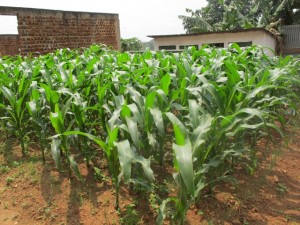Microfinance institutions are the main source of financing for many farmers across the country. Many MFIs have a strict regime of repayment, from over 3% interest rate per month to weekly repayment instalments. Farming is not only a long-term activity, but also risky as farmers are faced with vagaries of weather, pests and diseases as well as fluctuating prices. The Council for Economic Empowerment of Women of Africa (CEEWA-Uganda) recently carried out a research on the coping strategies of rural farmers with microfinance loans. Ultimate Media interviewed Maria Goretti Karuhanga of CEEWA-Uganda about the survey.
Q. You recently published a report on coping mechanisms of farmers who borrow from micro finance institutions. What motivated the survey?
A. CEEWA -Uganda carried out the survey to assess the risks and uncertainties involved in agricultural financing and the coping strategies by farmers. We carried out the survey in Kasenyi Sub-County, Bokwa County, Masindi district. We wanted to establish the nature of agricultural activities farmers who use microfinance loans are involved in and decisions for investing in such agricultural activities. We also wanted to document coping strategies for credit management by clients, indicating those that have worked and those that have not worked (challenges faced) for both on farm and off-farm; and make recommendations for on-farm and off-farm financing that could enhance formalization of agriculture financing. The survey was carried out in June 2007 using Support Organisation for Micro Enterprise Development (SOMED) clients in Masindi district.
Q. What were your findings on coping mechanisms of farmers who borrow from Micro Finance institutions?
A. Having diverse sources of income like rent from Land, and growing of various crops with different gestation periods helps farmers to cope. The incomes realized from the crops with a shorter gestation period are used to service the agricultural loan. Farmers also minimize direct production costs, for instance by use of family labour. Other farmers’ partner with NGOs, service providers, extension workers and Local Associations that provide farm equipment like pesticides, tractors, and fertilizers and also offer farm management trainings. This helps the farmers increase their yields through better management of their farms as well as zero expenditure on inputs. The savings made through such ventures is used to service the loans.
Q. Agriculture financing is one area financial institutions have neglected for long time. What is the main problem?
The literature analysis we have indicates that agriculture financing faces extraneous constraints that render the agriculture business to be risky and costly to both the lender and the borrower. Problems like lack of business management skills among the small rural borrowers, then high risks (on the part of MFIs) in lending to agriculture due to high dependence on weather and market prices both of which are hard to predict make agricultural funding risky and difficult.
Other problems include long gestation period of some agricultural and livestock enterprises (especially for tree crops and animal rearing) and when farmers borrow small size loans they attract high interest rate. Then poor infrastructure especially roads and telecommunications facilities have not helped matters either. Many people also have poor culture of loan repayment.
How will findings of the survey address the problems associated with agriculture financing?
We have made a number of recommendations for government and MFIs. We hope things like grace period for loans should be given depending on the nature of the agricultural activity to be financed. Irregular payment of loan instalments should be expected and the Finance Institutions should be prepared to make appropriate adjustments in the repayment schedules.
Secondly we also hope the agricultural loan term should depend on the type of crop grown or the livestock kept. The focus should be on the time it will take to sell off the product. However, the farmer should always have other sources of income to meet the instalment due comfortably.
Q. How do the farmers cope with loans of short repayment periods?
A. We found that farmers join self-help Groups which normally range from 10 to 20 members who help mobilise funds in case a member has failed to pay a loan i.e. group security. Farmers also sell produce that was reserved from the previous harvest like maize. The incomes realized from these distress sales are also used to service loans.
Most Financial Institutions ask for collateral security as requirement for accessing loans. How has this affected agricultural financing?
A. Of course this has negatively impacted the agricultural financing. Most farmers don’t have the collateral so they can’t get loans from the commercial banks. So in the end it becomes a cycle of lack of collateral security and no funding for agricultural activities.
Q. How does CEEWA-Uganda help these farmers to overcome these challenges?
A.CEEWA-Uganda is a Non-Governmental Organisation aimed at promoting the economic empowerment of women in the development process through Advocacy, Training, Research, Documentation and Information dissemination. To this effect, CEEWA promotes effective and gender sensitive credit policies and programs that address farmers’ needs and women’s needs in particular.
CEEWA-Uganda also shares research findings similar to these with policy makers and stakeholders concerned, like Micro Finance Institutions so as to influence decision making in favour of the farmers.
In addition CEEWA provides business management and entrepreneurship training to farmers, whenever possible to assist in effective use of loans.
Q. Why do you focus on women in your programmes?
A. Women constitute 51percent of the population and the majority of farmers- the backbone of this country. Unfortunately, women are marginalized and have limited control over productive assets and decision-making. CEEWA’s interventions are aimed at enhancing gender equality. Promoting gender equality and equity is not only fair but also makes good economic sense. With the economic empowerment of women, Uganda stands to gain from both higher economic growth as well development. This is because women are the engine of most economic activities in Uganda.



4 Responses to "Loans for agricultural financing: how farmers are coping"